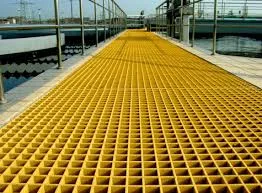
-
 Afrikaans
Afrikaans -
 Albanian
Albanian -
 Amharic
Amharic -
 Arabic
Arabic -
 Armenian
Armenian -
 Azerbaijani
Azerbaijani -
 Basque
Basque -
 Belarusian
Belarusian -
 Bengali
Bengali -
 Bosnian
Bosnian -
 Bulgarian
Bulgarian -
 Catalan
Catalan -
 Cebuano
Cebuano -
 China
China -
 China (Taiwan)
China (Taiwan) -
 Corsican
Corsican -
 Croatian
Croatian -
 Czech
Czech -
 Danish
Danish -
 Dutch
Dutch -
 English
English -
 Esperanto
Esperanto -
 Estonian
Estonian -
 Finnish
Finnish -
 French
French -
 Frisian
Frisian -
 Galician
Galician -
 Georgian
Georgian -
 German
German -
 Greek
Greek -
 Gujarati
Gujarati -
 Haitian Creole
Haitian Creole -
 hausa
hausa -
 hawaiian
hawaiian -
 Hebrew
Hebrew -
 Hindi
Hindi -
 Miao
Miao -
 Hungarian
Hungarian -
 Icelandic
Icelandic -
 igbo
igbo -
 Indonesian
Indonesian -
 irish
irish -
 Italian
Italian -
 Japanese
Japanese -
 Javanese
Javanese -
 Kannada
Kannada -
 kazakh
kazakh -
 Khmer
Khmer -
 Rwandese
Rwandese -
 Korean
Korean -
 Kurdish
Kurdish -
 Kyrgyz
Kyrgyz -
 Lao
Lao -
 Latin
Latin -
 Latvian
Latvian -
 Lithuanian
Lithuanian -
 Luxembourgish
Luxembourgish -
 Macedonian
Macedonian -
 Malgashi
Malgashi -
 Malay
Malay -
 Malayalam
Malayalam -
 Maltese
Maltese -
 Maori
Maori -
 Marathi
Marathi -
 Mongolian
Mongolian -
 Myanmar
Myanmar -
 Nepali
Nepali -
 Norwegian
Norwegian -
 Norwegian
Norwegian -
 Occitan
Occitan -
 Pashto
Pashto -
 Persian
Persian -
 Polish
Polish -
 Portuguese
Portuguese -
 Punjabi
Punjabi -
 Romanian
Romanian -
 Russian
Russian -
 Samoan
Samoan -
 Scottish Gaelic
Scottish Gaelic -
 Serbian
Serbian -
 Sesotho
Sesotho -
 Shona
Shona -
 Sindhi
Sindhi -
 Sinhala
Sinhala -
 Slovak
Slovak -
 Slovenian
Slovenian -
 Somali
Somali -
 Spanish
Spanish -
 Sundanese
Sundanese -
 Swahili
Swahili -
 Swedish
Swedish -
 Tagalog
Tagalog -
 Tajik
Tajik -
 Tamil
Tamil -
 Tatar
Tatar -
 Telugu
Telugu -
 Thai
Thai -
 Turkish
Turkish -
 Turkmen
Turkmen -
 Ukrainian
Ukrainian -
 Urdu
Urdu -
 Uighur
Uighur -
 Uzbek
Uzbek -
 Vietnamese
Vietnamese -
 Welsh
Welsh -
 Bantu
Bantu -
 Yiddish
Yiddish -
 Yoruba
Yoruba -
 Zulu
Zulu
rtrp pipe
Understanding RTRP and Its Applications in Pipe Systems
In the world of engineering and construction, various terms and acronyms serve as cornerstones for specific technologies and methodologies. One such term is RTRP (Reinforced Thermosetting Resin Pipe). This innovation has made a significant impact on the design and performance of pipe systems, particularly in industries where strength, durability, and resistance to corrosion are of paramount importance.
What is RTRP?
RTRP is a type of piping system that is manufactured using a combination of thermosetting resin reinforced with fibers, typically glass. This design provides a unique combination of properties that makes RTRP an attractive option for various applications. The thermosetting aspect means the resin cures into a hardened state, offering significant strength and rigidity. The reinforcement with glass fibers enhances these properties further, resulting in a robust piping solution that can withstand high pressure and temperature variations.
Advantages of RTRP Pipes
One of the primary advantages of RTRP is its exceptional resistance to chemical corrosion. Unlike traditional materials like steel or copper, RTRP does not corrode when exposed to aggressive substances. This property makes RTRP particularly useful in chemical processing industries, wastewater treatment facilities, and other environments where pipes are exposed to harsh chemicals.
In addition to chemical resistance, RTRP pipes exhibit an impressive strength-to-weight ratio. This means that they are lighter than many metal alternatives but do not compromise on structural integrity. The reduced weight simplifies transportation and installation, which can lead to significant cost savings during construction.
Understanding RTRP and Its Applications in Pipe Systems
Applications of RTRP
rtrp pipe

RTRP piping systems find applications in a wide range of industries. In the oil and gas sector, these pipes are used for transporting fluids under high pressure and temperature conditions. Their resistance to corrosion and strength makes them ideal for both onshore and offshore operations.
In addition, RTRP is gaining popularity in the construction of water supply and drainage systems. The longevity and durability of these pipes ensure reliable service over time, reducing maintenance efforts and costs. Many municipal projects worldwide are increasingly considering RTRP due to these advantages.
Moreover, RTRP applications extend to the electrical sector, where the pipes are used for cable conduits. The non-conductive nature of the material protects sensitive cables while providing physical protection against environmental factors.
Challenges and Considerations
Despite the numerous benefits, the use of RTRP pipes is not without challenges. The initial cost of RTRP installations may be higher compared to traditional materials. However, when considering the lifecycle cost, including maintenance and replacement, RTRP often proves to be more economical in the long run.
Another consideration is the need for specialized tools and techniques for installation and repair. The unique properties of RTRP pipes require trained professionals who are familiar with the specific handling and joining methods necessary for optimal performance.
Conclusion
In conclusion, RTRP offers a compelling solution for modern piping applications across various industries. Its combination of strength, chemical resistance, and thermal insulation makes it an attractive alternative to traditional piping materials. As industries continue to seek more durable and efficient materials, RTRP is poised to play a crucial role in the advancement of piping technology. Its unique properties offer significant advantages that can lead to more sustainable practices in construction and infrastructure development. As we move further into an era focused on innovation and efficiency, the relevance of RTRP in the engineering landscape will undoubtedly grow.









